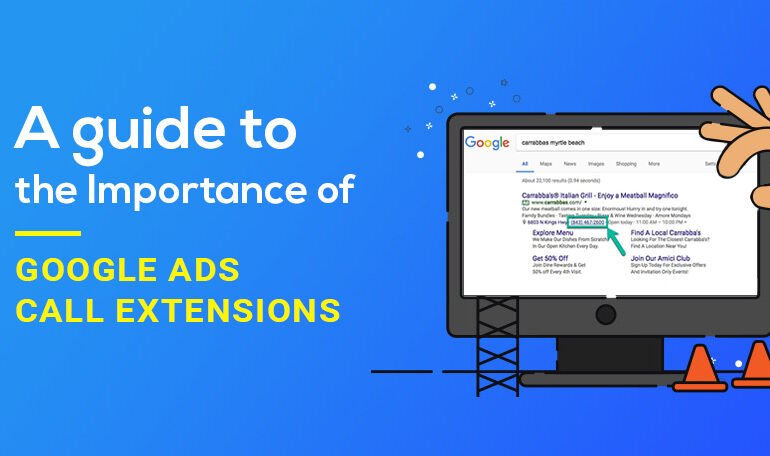Guide to Google AdWords Extensions

Along with the Quality Score, ad extensions are the “open secrets” of advertising on Google. Incorporating these little extras into your ads can make the difference between a mediocre campaign and a sweeping one.
Google AdWords extensions are one of the three main factors that influence the price you’ll pay for your ads, along with bids and Quality Score. AdWords appreciates the fact that advertisers include optional extensions, as they provide more information to the user. And in addition to positively influencing the price, they can also help you get more clicks on your ads.
There are many types of extensions, both automatic and manual, so it can be a bit overwhelming at first. But don’t worry: with this guide to extensions for Google advertising, you’ll see how including them in your campaigns is much easier than it seems.
What are extensions for Google AdWords?
Google Ads extensions are a feature that displays additional information with your ad, such as your address, phone number, store reviews, or more links to your website. Its objective is to provide more information to the user, which is very relevant if we take into account that the basic space we have is very limited.
In addition, extensions make the ad take up more space on the Google results page, which makes it easier for them to attract the user’s attention and therefore increase the chances of them clicking. According to Google, “on average, implementing a new ad extension leads to a 10 to 15% increase in CTR.”
Most extensions are manual, meaning that the advertiser has to take care of setting them up. But there are also automatic extensions, which Google incorporates into campaigns that have not expressly removed this option. Automatic extensions are compatible with manual extensions, which means you can have both extensions turned on at the same time in your ads.
As an advertiser, you can set up a variety of extensions, which we’ll look at later in this guide. But activating an extension doesn’t mean that it automatically shows on all your ads. The final decision on whether or not to show extensions (and if so, which ones) is in the hands of Google, depending on what it deems most appropriate in each auction. When deciding whether or not to show them, Google takes into account these factors:
- Ad Rank: This parameter combines bid, ad, and landing page quality, expected impact of extensions, and other ad formats. For Google Ads extensions to show, your ad must have a minimum Rank.
- The position of the ad on the results page. The higher an ad is shown on the results page, the more space is available to show extensions. Once again, you’ll need to improve your ranking to show up higher.
- All other Google AdWords extensions. Google tries to show the best-performing combination of extensions and formats in each auction, among those activated by the advertiser. However, there is a limiting factor: Google will not show a combination of extensions that provides a CTR higher than the expected CTR for an ad with a higher position.
In terms of cost, adding extensions to advertising on Google is completely free for the advertiser. You will only be charged when a user clicks on the ad, either on the headline or on one of the extensions. The exception to this rule is review extensions, where clicks are free.
Google AdWords automatic extensions
To start getting into the matter, let’s see what the automatic extensions are, which Google creates without you having to do anything. To see which ones are active in your account, click Ads & extensions in the page menu on the left, then click More — Automatic extensions (in the new AdWords interface).
- Automatic call extensions. AdWords can set up these extensions when your website indicates that one of your business goals is for people to call you. From mobile phones, users can click on the extension to call directly.
- Dynamic sitelink extensions. These extensions serve to guide the user and get them to the right place on your website, for example, the “menu” page in the case of a restaurant.
- Dynamic site snippet extensions. This type of extension incorporates additional information to help users get a clearer idea of the range of products and services your business offers.
- Automatic location extensions. Location extensions help users reach your store, whether it’s adding the address, a map of the location, or the distance to the business.
- Consumer rating extensions. Consumer ratings highlight industry-specific ratings based on consumer surveys.
- Seller rating extensions. These extensions display a combination of information and reviews, so users can get an idea about the quality of the advertiser.
- Previous visits. Provide information about the number of times your website has been visited.
Which Google Ads extensions are you interested in?
We come to the crux of the matter: which Google advertising extensions should I incorporate into my ads? As always, the answer depends on what your advertising goals are. Let’s see which are the most common and what extensions correspond to them.
1# Objective: to get customers to buy from my company
- Geo-location extensions: Show users how to get to your business easily and quickly. You can also incorporate call extensions and a link with useful information, such as business hours or photographs of the premises.
- Affiliate Location Extensions: To locate other stores where they sell your brand’s products, e.g., chains or franchises.
- Callout extensions: You can use these to add additional information that encourages users to buy, such as “2×1 in our store.”
2# Objective: to get conversions in an online store
- Sitelink extensions: Use these to direct the user directly to a specific page on your website, such as the order page.
- Callout text extensions: “free shipping”, “24-hour support”…
- Snippet extensions: Set up extensions to highlight information that’s most useful to your customers, such as a category or product listing.
- Price extensions: Allow users to see the price directly in the listing.
- Review Extensions
3# Objective: to get customers to contact you
- Call extensions
- SMS extensions: Allow users to send text messages from within the ad itself.
- Goal: Get customers to download your app
- App extensions: Available for iOS and Android mobile devices (including tablets). Its function is to encourage users to download an app.
Tips to optimize your extensions in AdWords
To end this guide, let’s look at some quick tips to get the most out of extensions in Google advertising.
- Adding extensions to your listings is free and takes relatively little effort, so add as many as you find relevant. At a minimum, AdWords recommends including four.
- As with ads and keywords, extensions can be approved or rejected. To get yours activated, be sure to review these requirements for each type of extension.
- Try to incorporate at least 6 sitelinks, both for desktop and mobile. It is better if they are short, concise, and descriptive.
- Add additional information to your sitelinks (2 lines of 35 characters each). They don’t always show up with links, but when they do, they can provide more information to the user.
- Optimize site extensions for mobile. Think about what might be of more interest to a user who makes a query “on the go”, as it is likely to be different from a user who is searching from their computer.
- Make sure that call extensions are only shown when there is someone to pick up the phone; otherwise, you would be spending money on a call that no one is going to answer.
- Plan your callout extensions carefully. Use them to highlight key features of your product or service, and don’t repeat the information that’s already in the body of the ad.
- Check your extensions’ statistics frequently. If any of them aren’t getting enough clicks, give them a spin to see how you can improve them.
- And as always, if you have doubts about which option may work best for you, be sure to practice with A/B testing to compare results and stick with the most optimal variant. Little by little, you can improve your ads to achieve excellent results in Google AdWords.










